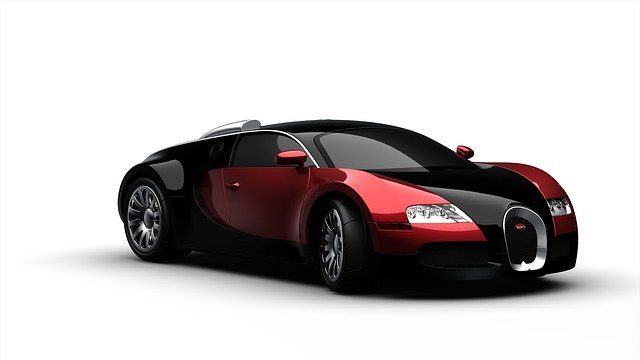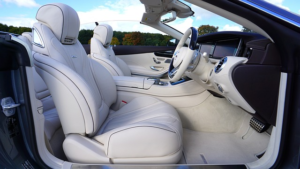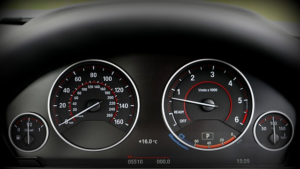Spa track days: expert tips, circuit, history and how to book evo’s 2022 event – Evo
Spa has it all. The stunning Belgian circuit delivers one of the most thrilling driving experiences on the planet, enhanced by the echoes from 100 years of motorsport history whispering through its pine trees. It’s no wonder that UK drivers make the pilgrimage to Spa-Francorchamps in huge numbers every year, be it for the big race weekends of the Belgian Grand Prix or the 24-hours of Spa, or …….

Spa has it all. The stunning Belgian circuit delivers one of the most thrilling driving experiences on the planet, enhanced by the echoes from 100 years of motorsport history whispering through its pine trees. It’s no wonder that UK drivers make the pilgrimage to Spa-Francorchamps in huge numbers every year, be it for the big race weekends of the Belgian Grand Prix or the 24-hours of Spa, or to take one of motorsports greatest tests themselves on a Spa track day.
It’s the latter option we’re looking at here, not least because the 2022 evo Trackdays season now includes a very special trip to Spa. We’re joining one of RSR’s Premium Trackdays on 18 October so before you book your place, it probably makes sense to get some expert advice on getting the most from a track day at Spa.
Spa track day tips: Ron Simons, Owner, RSR Trackdays
RSR has been running events at spa and the Nürburgring for more than 20 years, ever since owner Ron Simons started making the trip from his native South Holland to the Ring in one of his Alfa Romeo 75s and began offering track day hire and tuition. These days his business has grown into a leading proponent of the track day scene, with bases at Spa, the Ring and elsewhere, an impressive fleet of rental vehicles and a client base from all over the world. Which makes Ron and RSR operations manager Jonathan Chan ideally placed to give anyone new to track days some top tips on how to look after your car, your own well-being, and your wallet.
Let’s start with you, the driver. ‘If you’re coming to Spa for the first time,’ says Jonathan, ‘one of the best things you can do is get an instructor alongside you. You can be confident about what you’re doing on the track, and the traffic around you.’ RSR provides instructors for either half or full days.
‘The biggest problem we see is guys driving outside the limits of the car, the track and themselves – so if you’re hiring, we can help with choosing a level of car you’re confident in driving. The main bit of kit you need is a crash helmet. You don’t need a race suit unless you really want to wear one.’
‘And don’t drink too much the day before,’ quips Ron. ‘Generally speaking, track days are quite gentlemanly,’ says Jonathan. ‘It’s not a race, there’s nothing to win. If you are slower [than the car behind], just lift off the gas a bit [to let them past]. But don’t slam on the brakes – that’s even worse!’
Clearly, car prep is vital, but it’s sometimes overlooked. ‘Some guys, particularly we find with those coming from the UK, arrive with worn brakes and tyres,’ notes Jonathan. ‘They’ll be here for two to three days, but by lunchtime on the first day they’ll be needing brake pads, and then there’s a panic to get them fitted – usually expensively, on a Sunday. So have your car checked over before you come, not six months in advance. Make sure it’s all tight underneath, there’re no oil or fluids weeping, nothing like a split driveshaft boot. Make sure the oil is topped up. Anything that needs sorting over here is a waste of your track time, so even throwing away a 50 per cent worn tyre will save you money in the long run. If you’re doing two days here, bring a second set of tyres or organise to have them here waiting to be fitted. After all, if it starts to rain you’ll also want to get home without a problem!’
Ron agrees, adding: ‘Refresh your brake fluid and make sure the pads are of a certain thickness. There’s a lot of wear and tear of brakes on a circuit, but Spa is not a high brake-wear track like Zolder or Monza. The Nordschleife you don’t need much brakes at all, and you don’t have that much tyre wear either as it’s a natural, flowing track with low-grip tarmac.’
As for car choice, Jonathan has this advice: ‘When anyone asks me what the ideal car for a track day is, I tend to mention something like a Porsche Cayman. You want something that’s quite lightweight, so it’s easier on tyres and brakes.’
‘The best car is so personal,’ adds Ron, ‘and is very different from the Ring to Spa. At the Ring you don’t need a fast car, the track is so fast down the hill anything will run 120mph easily, so you can get into a lot of trouble. So the best bang for buck is a Clio or Mégane RS, or an M2 or Cayman, but even those [latter two] are already very fast for a beginner. At Spa you can learn the track in two hours, what gear to be in, and then you can push a bit, and the track is very forgiving so you can make a mistake and only go slower, as opposed to the Ring where you will need to replace the guardrail afterwards. So at Spa everyone can drive a GT3 – you may not use it to its full potential, but if that’s what you want to do you can [hire one from us and] do it. We have everything from a Twingo RS to an LMP car.’
Most of RSR’s fleet is run on road tyres to make them more forgiving for beginners. Their BMW M2s, for example, use Michelin Super Sports and standard discs, but with an endurance brake pad that gives longer life but doesn’t generate the sort of heat that can easily warp a disc. However, adds Jonathan, ‘You can’t drive an M2 like a Porsche Cup car. You have to drive to the level of the car and not over it.’ It’s a good piece of advice for anyone taking their own road car.
RSR get around 250 miles per set of tyres on one of their rental Mégane RSs, with brake pads lasting 500-600 miles. A disc change is carried out after the third pad change. With the 911 GT3s, the tyres last about the same amount of time, with pads making only 400-500 miles. As a general rule, the company believes their costs are £2-3 per track day mile for one of the Renaults, rising from there. They’ll inspect the car before every time it goes out, which means some cars are examined almost daily. And while they stick to the makers’ oil change schedule, they’re regularly checking and changing the brake fluid.
Join evo at Spa
The evo track day calendar has burgeoned in recent years, with brilliant British circuits such as Goodwood, Brands Hatch and Oulton Park joining our ‘home’ venue of Bedford Autodrome. But now we’re taking things to another level for what promises to be our most exciting track event yet: the evo Spa‑Francorchamps track day!
Held in association with RSR, we’ll be joining one of their Premium Trackdays on 18 October at arguably the world’s finest circuit. So you get full access to everything RSR offers, plus a Eurotunnel crossing, one night’s accommodation and dinner with evo the night before the event.
The Spa-Francorchamps circuit needs no introduction. A current F1 venue, it has managed to keep the challenge, atmosphere and aesthetics befitting its elder statesman status in the world of motorsport, and hence is like no other track in the world. It offers raw speed, technical corners and, of course, the test of courage and car control that is Eau Rouge. Need we say more?
RSR Spa’s Premium Trackday package includes a comprehensive safety briefing and a unique track walk. Attendee numbers are kept lower than average and an open pitlane means you can drive when, and as little or often, as you like. The noise limit is 103 dB. RSR also offers a vast rental fleet including Renault Sport, BMW and Porsche cars, some modified further for track work, and even options with hand controls for drivers with disabilities. Instructors are available too when pre-booked, and there’s the option to buy additional driver and passenger spaces.
Add in a good road trip with the circuit of Spa-Francorchamps as your destination and it promises to be an unforgettable experience. Register your interest now at evotrackdays.co.uk.
Spa-Francorchamps circuit history
Spa’s motorsport story began after the First World War when a plan to revive the La Meuse Cup car race needed a course and the triangle formed by the public roads connecting Spa-Francorchamps, Malmedy and Stavelot seemed the ideal location. In the early 1920s the Royal Automobile Club of Belgium began holding the first organised Belgian Grand Prix, an endurance race, on the circuit and in 1924 the first edition of the 24 hours race was held. The track had gained a timing booth, a scoreboard and, in 1928, the dirt roads had their first covering of Tarmac to stop the stones flying.
The world famous corner we now know as Eau Rouge was created in 1939 and the circuit at Spa would continue to evolve over the years with layout changes and safety improvements shaping it into the shorter track we know today. It was only in 2003 that the circuit’s roads were closed to traffic from March to October and they were closed completely soon after, turning Spa into a permanent venue of motorsport.
Find out more about evo Trackdays and book your place here…






